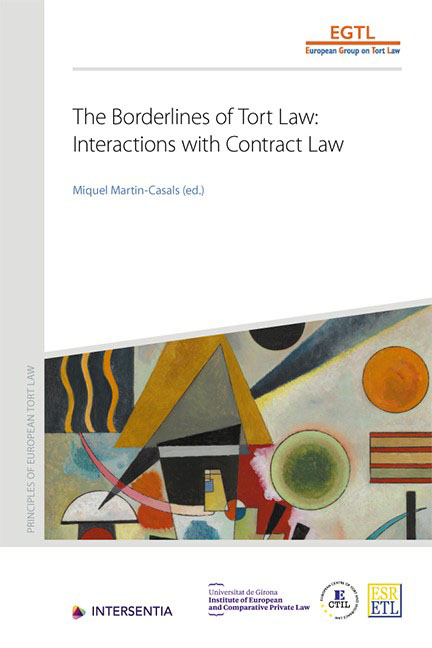Book contents
The Netherlands
Published online by Cambridge University Press: 15 November 2019
Summary
QUESTIONS
TRACING THE BORDERLINES
A. DISTINCTION BETWEEN TORT AND CONTRACT
The main reason for distinguishing between contract and tort lies with a person's will or intention to be bound by the norm at issue. In the standard situation, contractual liability only arises if a party breaches a norm that she previously agreed to act in accordance with. Tortious liability, on the other hand, arises if a person breaches a norm that is imposed upon that party by operation of law.
1) Contractual Norms and Consequent Liability
The importance of the concept ‘will’ (or ‘intention) in contract law can, for instance, be seen in the following basic rules of Dutch contract law. First, a contract is concluded if there is a ‘concurrence of wills or intentions.’ Normally, this occurs when an offer is met by acceptance, but even if offer and acceptance cannot be unequivocally identified, a court may hold that a contract has been concluded if there is sufficient evidence that the parties’ wills or intentions concurred. Secondly, most – although not all – contractual rules allowing for (partial) avoidance of the contract relate to some defect in one party's will or both parties’ wills. There are some instances in which contracts create obligations other than those envisaged by the parties – for instance, requirements by mandatory law, customary law and/or reasonableness and fairness – but at its core, the law of contract is based on the idea that parties are only bound by the obligations they have assumed willingly.
2) Tortious Norms and Consequent Liability
Tortious liability is generally based on art 6:162 of the Dutch Civil Code (Dutch CC) or one of the specific torts. In establishing liability under art 6:162 Dutch CC or one of the specific torts, the tortfeasor's will or intention to be bound by that norm (or: duty of care) is irrelevant. This does not mean that the concepts of good faith, intent or fault have no application in Dutch tort law. Indeed these concepts are oft en an essential part of establishing liability.
- Type
- Chapter
- Information
- The Borderlines of Tort LawInteractions with Contract Law, pp. 331 - 382Publisher: IntersentiaPrint publication year: 2019

